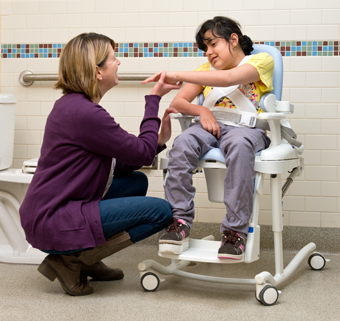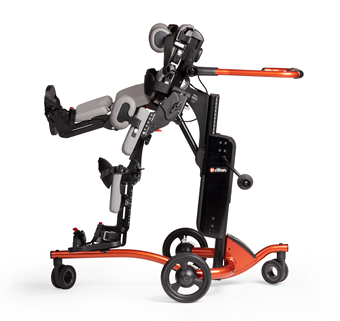Evidence Update
Task-Specific Gait Training Improves Gait Speed
| January 2017 Improving gait parameters is a primary goal of therapy intervention. One of these parameters is gait speed because we know there is a link between how fast we walk and how well we interact with our surroundings. (Just notice how frustrated your aging parents become as their gait slows them down.) Simply put, refining gait through therapy ultimately improves speed and boosts quality of life.
Improving gait parameters is a primary goal of therapy intervention. One of these parameters is gait speed because we know there is a link between how fast we walk and how well we interact with our surroundings. (Just notice how frustrated your aging parents become as their gait slows them down.) Simply put, refining gait through therapy ultimately improves speed and boosts quality of life.
There are a number of approaches to improving gait outcomes and gait speed in rehabilitation. There are also conflicting reports concerning which method is best, especially in a population of children with cerebral palsy. Some therapists value the impairment-based approach aimed at isolating and strengthening lower extremity musculature, and others the task-specific approach, providing opportunities for repetitive stepping practice on the treadmill or over ground.
So it’s good news that a new and recent systematic literature review identifies, through the use of meta-analysis, which interventions are most effective towards increasing gait speed in children with cerebral palsy. (In fact, this is the first ever meta-analysis regarding gait training for children with CP.) By a large and significant margin, the study results showed that task-specific gait training improved gait speed more than the impairment-based approach. The authors additionally note that providing auditory and visual feedback during ambulation practice over a treadmill or over ground is an excellent way to further gait outcomes.
For us in the rehabilitation community this is an important addition to the existing body of knowledge on task-specific gait training. It’s well worth your time to review.
Reference:
Moreau N, Bodkin AW, Bjornson K, Hobbs A, Soileau M et al. Effectiveness of Rehabilitation Interventions to Improve Gait Speed in Children with Cerebral Palsy: Systematic Review and Meta-analysis. Phys Ther. 2016;96(12):1938-54.




